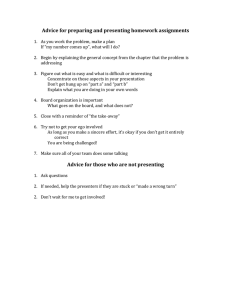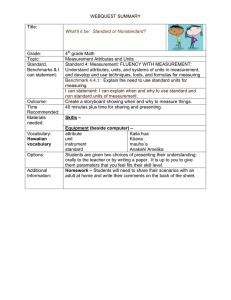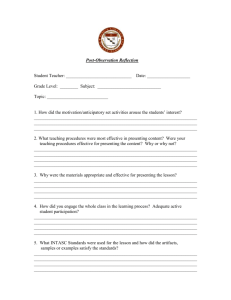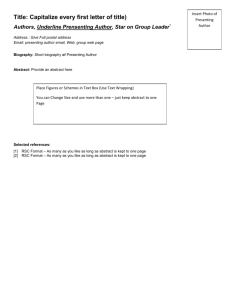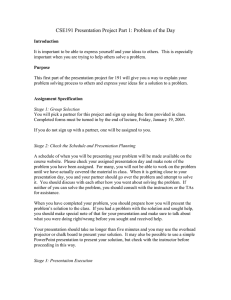APPENDIX IV SMALL SYSTEMS
advertisement
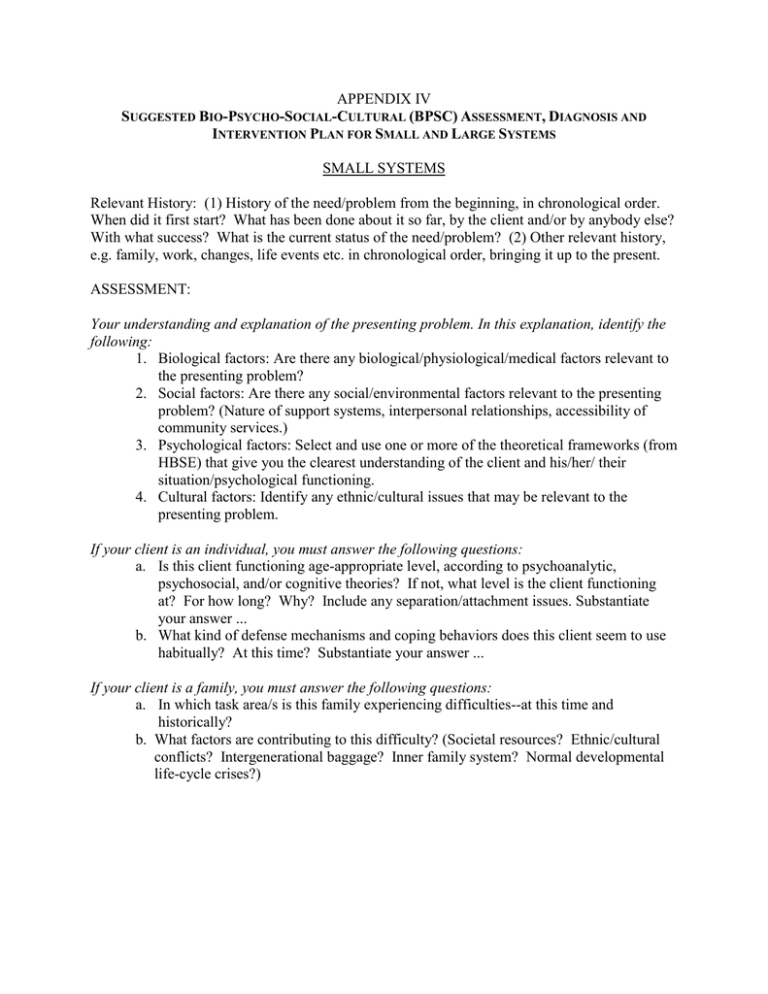
APPENDIX IV SUGGESTED BIO-PSYCHO-SOCIAL-CULTURAL (BPSC) ASSESSMENT, DIAGNOSIS AND INTERVENTION PLAN FOR SMALL AND LARGE SYSTEMS SMALL SYSTEMS Relevant History: (1) History of the need/problem from the beginning, in chronological order. When did it first start? What has been done about it so far, by the client and/or by anybody else? With what success? What is the current status of the need/problem? (2) Other relevant history, e.g. family, work, changes, life events etc. in chronological order, bringing it up to the present. ASSESSMENT: Your understanding and explanation of the presenting problem. In this explanation, identify the following: 1. Biological factors: Are there any biological/physiological/medical factors relevant to the presenting problem? 2. Social factors: Are there any social/environmental factors relevant to the presenting problem? (Nature of support systems, interpersonal relationships, accessibility of community services.) 3. Psychological factors: Select and use one or more of the theoretical frameworks (from HBSE) that give you the clearest understanding of the client and his/her/ their situation/psychological functioning. 4. Cultural factors: Identify any ethnic/cultural issues that may be relevant to the presenting problem. If your client is an individual, you must answer the following questions: a. Is this client functioning age-appropriate level, according to psychoanalytic, psychosocial, and/or cognitive theories? If not, what level is the client functioning at? For how long? Why? Include any separation/attachment issues. Substantiate your answer ... b. What kind of defense mechanisms and coping behaviors does this client seem to use habitually? At this time? Substantiate your answer ... If your client is a family, you must answer the following questions: a. In which task area/s is this family experiencing difficulties--at this time and historically? b. What factors are contributing to this difficulty? (Societal resources? Ethnic/cultural conflicts? Intergenerational baggage? Inner family system? Normal developmental life-cycle crises?) SUMMARIZE YOUR ASSESSMENT: Explain briefly: Why is this client (individual or family) experiencing this problem at this time? What are the client's strengths and limitations? Motivation for change? External barriers and internal resistances? INTERVENTION: Based on your summary above: 1. What kind of help does this client need at this time? From whom? For how long? What kind of help does this client not need at this time? Why? (Substantiate your answer.) 2. If you worked in an ideal agency with all the resources and authority you needed. How would you help this client a) to address the presenting problem and any underlying factors; and b) to prevent future problems? (Your Action Plan.) Specify your intervention modality/ies and your rationale for it. 3. But since you don't work in an ideal agency, how would you help this client in the agency you are currently working with? 4. Specify the intervention modality you suggest and your rationale for it. PREVENTION: What could have been done --by your agency and/or any other people/ agencies/organizations in the community--to prevent this presenting problem? BPSC for LARGE SYSTEMS ASSESSMENT: 1. What is the presenting problem? 2. Relevant History: (1) History of the need/problem from the beginning, in chronological order. When did it first start? What has been done about it so far, by the client and/or by anybody else? With what success? What is the current status of the need/problem? (2) Other relevant history, e.g. family, work, changes, life events etc. in chronological order, brining it up to the present. 3. How was the presenting problem brought to you attention? (client, co-worker, community member, it is your own issue with the larger system) 4. What is the "problem solving" capacity of this large system? Does the system follow the problem solving process? (identification of a problem communicating the problem developing goals/objectives and interventions/alternatives select alternatives implement monitorevaluate) 5. What are the communication patterns in this is large system? (Who talks with whom?) Are communications clear/not clear, direct/not direct? 6. Who are the players in this large system? Name them. What are the roles and responsibilities of each player? 7. Describe the characteristics of the interpersonal communications (affective responses). Do individuals personalize their responses (focus on the individual) or do individuals respond professionally (focus on the issue/substance)? 8. Lastly, describe the behavior control characteristics of the system. Is the system flexible (not chaotic) and open to change or rigid (not bending) and closed? Summarize your Assessment: (Same as small system, but substantiate "large system" for client.)
